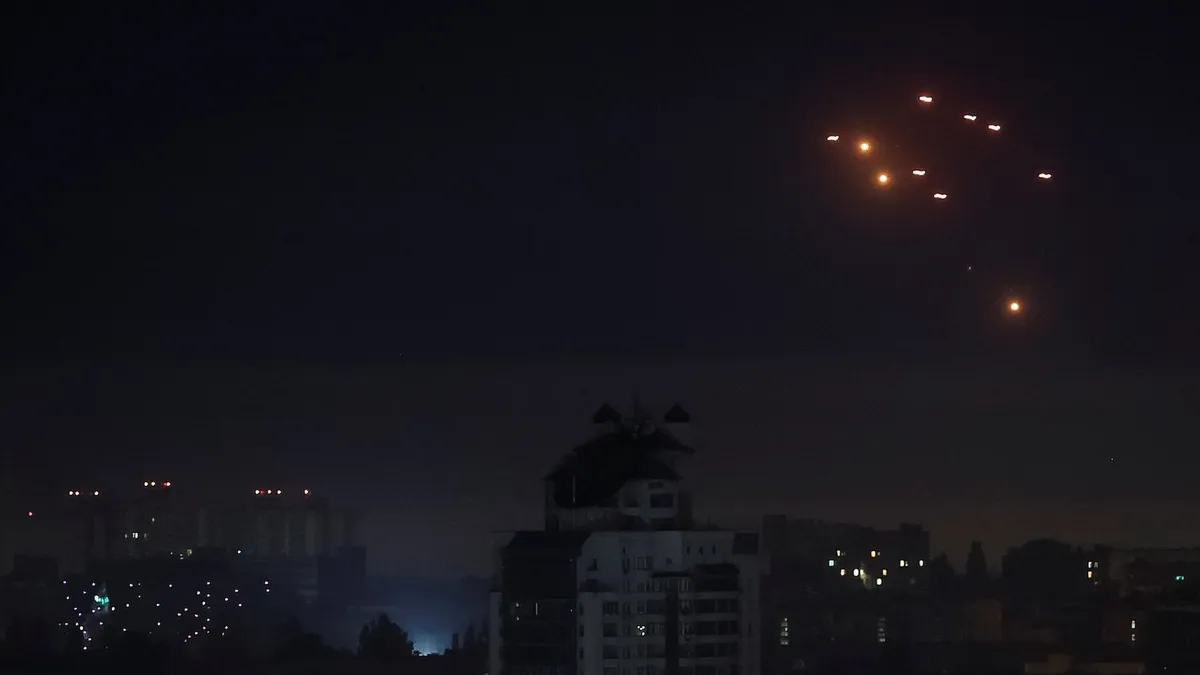
Russia and Ukraine have intensified their long-range cross-border drone operations, with significant activity reported from Sunday night into Monday morning. This surge in violence comes despite criticism from former President Donald Trump directed at both Russian President Vladimir Putin and Ukrainian President Volodymyr Zelenskyy. Trump’s frustration highlights the challenges in resolving the three-year-old conflict stemming from Russia's invasion of Ukraine.
Ukrainian officials reported that air defense systems engaged multiple targets across the nation, including the capital, Kyiv. Damage to buildings was confirmed as a result of the attacks. The Ukrainian air force indicated that Russia launched a staggering total of 364 aerial assault vehicles, comprising nine cruise missiles and 355 attack drones. Remarkably, all missiles and 288 drones were either shot down or neutralized during flight, demonstrating the effectiveness of Ukraine’s air defense capabilities.
Reports indicated impacts from the aerial assaults in five regions, with falling debris noted in ten areas. In response to these developments, Russia's Defense Ministry claimed to have downed 128 Ukrainian drones across 12 regions overnight. This cycle of drone strikes underscores the ongoing volatility of the conflict, with both sides exhibiting a willingness to escalate their military strategies.
Andriy Kovalenko, head of the Counter-Disinformation Center under Ukraine's National Security and Defense Council, revealed that unknown drones had targeted the city of Yelabuga in Russia's Tatarstan Republic, situated over 500 miles east of Moscow. This attack targeted a facility known for producing the Iranian-designed Shahed strike drones. Additional drone strikes reportedly hit a chemical plant in the Ivanovo region, approximately 150 miles northeast of Moscow, which manufactures components for various Russian military equipment.
Cross-border strikes have become a regular aspect of the ongoing conflict, with the frequency and intensity of attacks increasing significantly in recent months. Notably, the assault from Saturday night into Sunday was characterized by Ukrainian officials as the largest aerial attack of the war, involving 367 drones and missiles, resulting in at least 18 fatalities.
In light of these developments, Trump voiced strong disapproval of Putin’s actions while speaking with reporters. He stated, "I'm not happy with what Putin is doing. He's killing a lot of people," expressing his confusion over Putin's changing behavior. Trump emphasized his historical rapport with Putin but suggested that recent actions indicate a troubling shift in the Russian leader's mindset. He opined that Putin’s ambition likely extends beyond mere territorial claims, warning that such aspirations could lead to Russia's downfall.
Trump also criticized Zelenskyy, suggesting that the Ukrainian leader's rhetoric poses obstacles to a potential U.S.-brokered peace agreement. Zelenskyy and his administration have consistently pointed to Russia’s ongoing aggressive strikes as evidence of its lack of genuine interest in peace negotiations. They have urged Trump to implement stricter sanctions on Moscow to deter its extreme war objectives, which include annexing significant portions of Ukraine, demilitarizing the country, and blocking its NATO aspirations.
Despite Kyiv's appeals for new sanctions, the response from Trump and his administration has been limited. Ukraine is advocating for a 30-day ceasefire to create a conducive environment for peace talks; however, Russia has thus far rejected this proposal. Following the latest Russian strikes, Andriy Yermak, head of Zelenskyy's presidential office, stated on Telegram, "Russia should speed up the ceasefire," criticizing Moscow for delaying discussions without offering concrete proposals. He reiterated that sanctions and military support could compel Russia to expedite the ceasefire process.